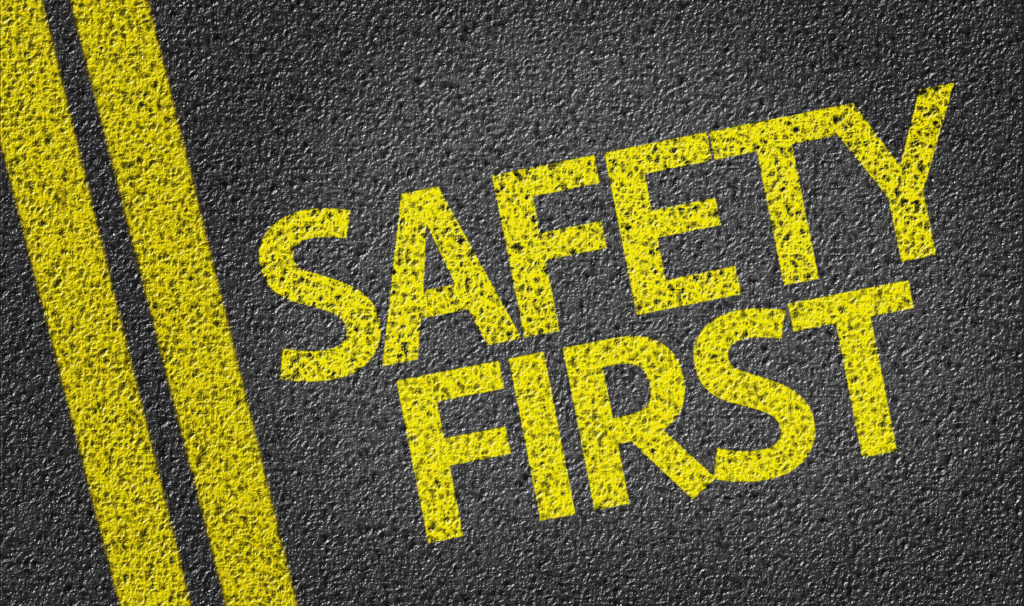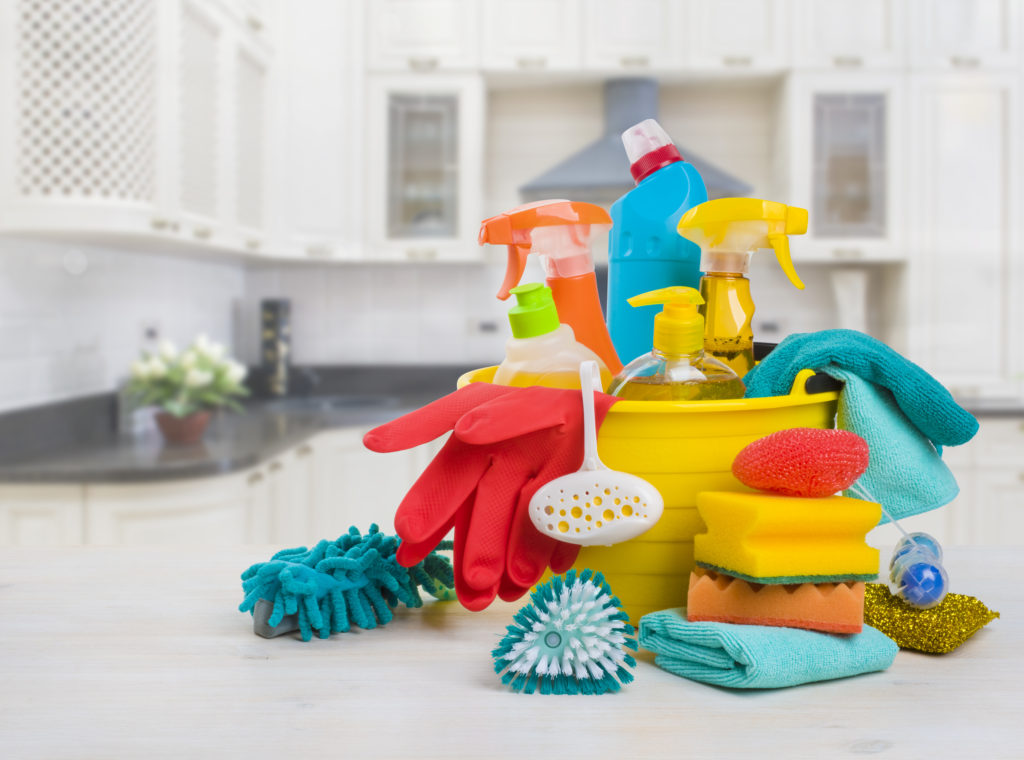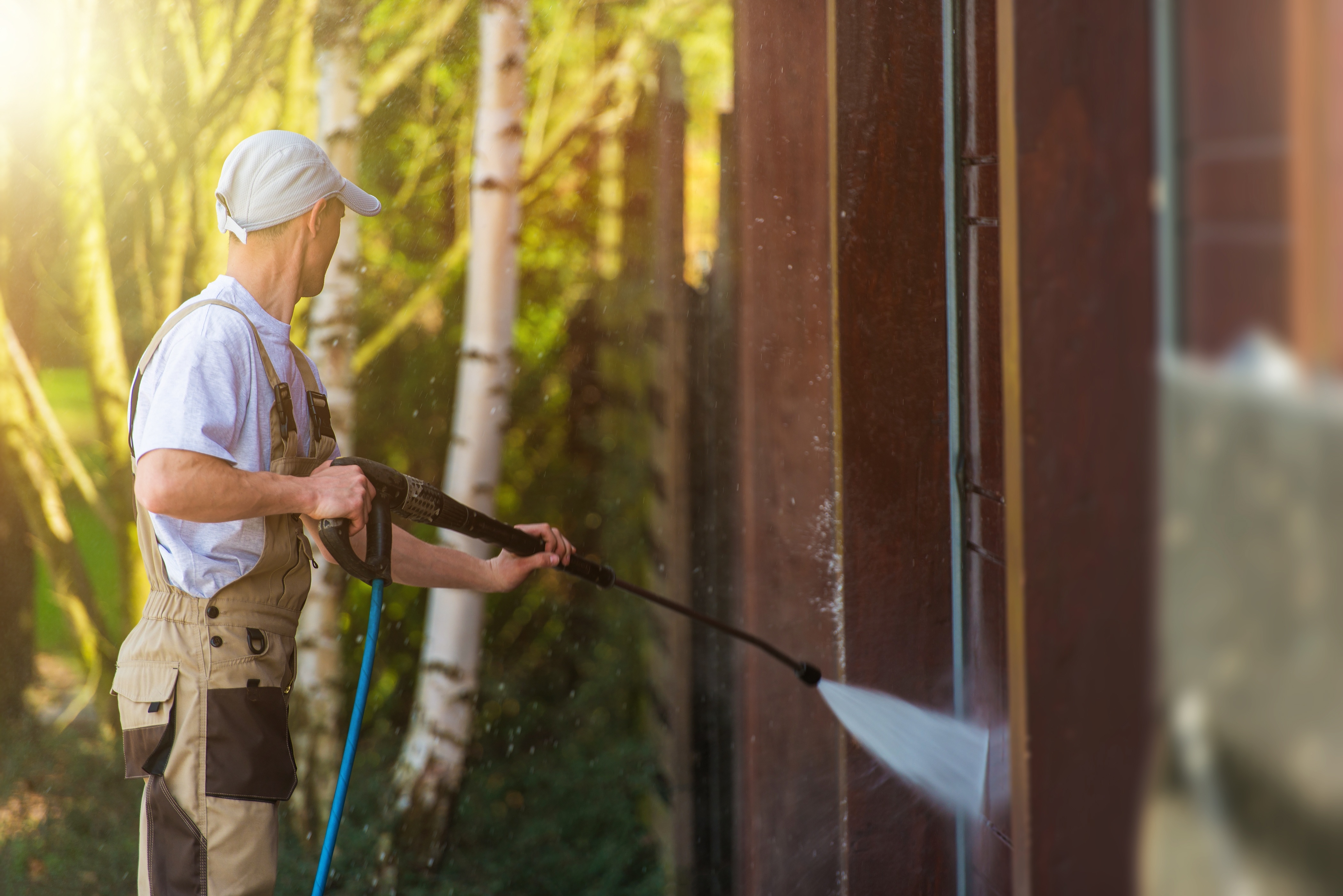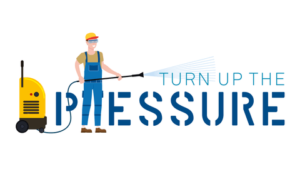
Pressure washers are powerful cleaning tools and they have a wide range of applications. Many people have found that they’re useful for outdoor cleaning projects, such as sidewalk cleaning, garage stains, and pool maintenance.
However, one of the most popular applications is as a house cleaner. Mold, mildew, dirt, and other debris can build up on the exterior of a house. This can be unsightly to owners and neighbors alike. In this scenario, pressure washers can be a big help! Many people like to wash their homes with bleach, but this is a somewhat complicated and risky procedure.
This article is a guide to safely pressure washing a house with bleach. You’ll learn the risks, the precautions you need to take, the proper equipment you’ll need, and a few extra tips! Read below to get started.
Understand The Risks First
Bleach is a powerful cleaning chemical. It’s popular among the house cleaner lineup because of its ability to kill mold and bacteria, while also brightening light materials. However, bleach is also dangerous to handle and it can cause damage to yourself, your home, and the surrounding area if used incorrectly.
Spraying bleach around your home can be dangerous to yourself, animals and plants, and anyone who’s nearby. Children and pets are especially vulnerable and bleach can leave a lingering smell for several days. If anyone is particularly sensitive, this might not be the best choice to use.
Bleach can also damage your landscaping and any nearby plants or trees. Bleach runoff can sink into the ground and kill grass, shrubs, or other plants. It makes the area less attractive and could cause long-term damage that isn’t immediately obvious.
Finally, pressure washing with bleach can be personally dangerous to you. If you do choose to clean with bleach, you should NEVER mix it with acidic compounds or ammonia-based cleaners. You also need to take precautions so you avoid breathing in fumes or handling bleach with your bare skin. You could chemically burn yourself or pass out from fumes if you’re not careful!
With all this in mind, you need to weigh the pros and cons of cleaning with bleach vs. a different type of cleaner. There are several safer options on the market, but it’s hard to deny the effectiveness of bleach. It has been a reliable cleaning product for many decades.
Take Safety Precautions

If you decide you do want to clean with bleach, the first thing you need to do is take the appropriate safety measures. Cleaning with a pressure washer has become popular because of its high water pressure and extendable reach. However, you shouldn’t get complacent.
If you’ll be cleaning a house with multiple levels, get a sturdy ladder and have someone spot you while you work. Make sure it’s set up on the firm ground and test it beforehand to make sure you can handle the added bulk of a pressure washer.
You also need to wear appropriate protective gear. Bleach can damage your skin, eyes, and clothing. Wear a full-body covering that you won’t mind getting dirty. Work coveralls are one of the best options for this. You also need impermeable gloves that won’t soak up moisture.
Wear protective eyewear as well. Bleach can easily burn your eyes, and that’s the last thing you want when you’re up on a ladder. Sealed goggles are great for this purpose. You also need to protect yourself against chemical fumes, so wear a cleaner-safe face mask. Bleach is a great and powerful cleaner, but it should be treated with extreme caution.
Prepare The House Exterior
Next, you need to examine the house exterior and get it ready for cleaning. Do a complete walk around the perimeter, examining the sides from top to bottom. Look for any problematic areas with extreme buildup. Generally, these areas have underlying problems like insect nests or leaky gutters. Resolve these problems before cleaning so that you don’t need to repeat the process later.
You also should think about the type of siding you have. Vinyl siding can be cleaned by pressure washers, but it can be cracked or destroyed if the pressure is too high. Take note of any weakened areas and avoid them during cleaning.
Close all the doors, windows, and other openings along the house and make sure they are securely latched. You don’t want any leaking or pooling on the inside of your home!
Finally, remove any items that are leaning against the outside walls. Play structures, garbage cans, and nearby parked cars should all be moved to prevent any staining or damage. Give yourself a nice, clear area to clean.
Gather Equipment

Next up, you need to gather the necessary supplies. The basic equipment is below, with a few option/specialty items listed below that.
Necessities:
- Pressure washer
- Measuring cup for cleaners
- Large bucket for mixing (at least 5 gallons)
- Clean water supply
- Bleach solution (either liquid or powder)
- Standard pressure washer cleaner (either liquid or powder)
- Household cleaners or chemicals to dilute bleach mixture (Details in next section)
Optional:
- Ladder/scaffolding
- Extension pole
- Deck brush
- Powdered laundry detergent
- Multiple nozzles (details below)
You’ll need to prepare the right equipment beforehand so you can safely pressure wash with bleach. The multiple nozzle options deserve a bit of extra explanation though.
Pressure washers are quite powerful, and choosing the right nozzles can help distribute the force more safely and evenly. They are often color-coded depending on how widely they spray. From least to most powerful, the colors are white, green, yellow, and red. You can think of the spectrum in terms of a stoplight!
Nozzles can help you control the pressure washer better, and the most powerful setting isn’t always the best. It can actually end up stripping away some of the sidings and possibly splashing back onto you.
It’s a good rule of thumb to go with the gentlest spray that will still get the job done. Pick a small section of the house to experiment with and start with the lowest pressure nozzle. Work up from one level to the next until you find the balance that’s best for you and your house.
Create Proper Bleach Mixture
Alright, I mentioned this in the list above, but there are some cleaners that you may want to mix into your bleach solution. You have to be extremely careful when you mix anything into bleach because it’s highly reactive and dangerous.
But to get the best clean possible, you usually need to have a mix of cleaners. Bleach by itself is very powerful, but it can damage your home if it hasn’t been diluted. There are a couple of different mixtures you can try.
Method 1: Mix 1 cup chlorine bleach with 3 cups of water. Spray onto the wall surface, then rinse off with standard power washer cleaner.
Method 2: Mix powdered laundry detergent, powder power wash cleaner, 1-quart bleach, and 1 gallon of water. Add a small amount of this mixture to the pressure washer and clean as usual.
You must use the proper chemicals and cleaners when you create a bleach mixture. Visit this article to learn more about safe combinations.
Get To Work!

Once you have all the necessary equipment, a safe bleach mixture, and all the safety precautions you need, you can get to work on cleaning your house. Pressure washing is quite efficient, but it can still take a while to thoroughly clean a large area.
Clear a good portion of your day for cleaning and don’t rush through any section. Wash each area from top to bottom. This pattern will help you avoid leaving streaks behind. Avoid putting too much pressure on windows or weakened areas of the siding. Come back later and hand-wash those areas if necessary.
If you feel overwhelmed or uncertain at any point, you can always stop what you’re doing and call in a professional cleaning service. They’re trained to handle dangerous chemicals and unstable cleaning conditions. Don’t do anything risky just for the sake of cleaning!
Clean Up Afterward
Once the house is sparkling clean and you’re ready to wrap up, you need to take care of your pressure washer. It’s served you well, but it could be endangered by bleach.
Bleach can damage the inner workings of your washer if you let it sit. After all, it’s a corrosive chemical! To preserve your pressure washer, you should run clear water through the mechanism for a few minutes when you’re done cleaning. This will help flush out the residue.
You might want to use this time to spray down your house with clean water one last time. The bleach mixture does a good job of killing bacteria and mold, but it doesn’t hurt to dilute any residual chemicals a bit.
If you’re particularly worried about bleach damaging your pressure washer, you might want to disassemble the unit and clean each part. It never hurts to be overly cautious when it comes to using bleach! That’s the best advice I can give you when it comes to this chemical.
